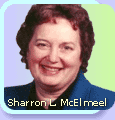

|
|
|

Literature
Frameworks — A Plan for Integration
by Sharron L. McElmeel
The literature
framework presented here is an example of a thematic approach to
curriculum integration. By using the topics as building blocks for
workshop activities in the classroom, the blocks may be combined
in a variety of ways to support a multitude of themes or curricular
units. Creative uses of resources allow for activities and resources
to be used in different ways at different grade levels. For example,
a book to accompany a post office unit might be read aloud to preschoolers,
but in the primary grades the book might be used for independent
reading. A book read for background for grades 3–4 might become
a model for writing in grades 5–6. Given a framework for a
particular topic, educators will be able to build and tailor relevant
units to their district's adopted content standards and to meet
the specific needs of their students. Educational standards are
being developed nationally. Various state departments of education
and local districts are adapting those standards to their own states
and communities. Charles Hill and other educators at the Putnam
Valley Central Schools in Putnam Valley, New York, have developed
a portal site Developing
Educational Standards: Overview. This portal has hot links to
a myriad of informational sites, arranged by state and by subject
areas, various U.S. government sites, and sites from other nations.
The educational standard information relevant to your specific location
can be accessed and used to integrate the various topics and variations
possible through the use of the information and resources in Literature
Frameworks and with the suggestions shared during this month's online
discussions.
Another Web
portal is National
& State Standards. The site is mounted by MediaSeek, a company
that builds products based on data on education standards and instructional
products. MediaSeek has created a "Correlation Status of National
Standards" chart, which visually indicates applicable state standards
to the following areas: science, mathematics, English language,
social studies, technology, and other topics.
The topics included
in any developed frameworks or list of resources and activities
cannot be taken literally and used step-by-step within a classroom.
Topics and the identified resources simply provide the background
and the potential for making connections in the classroom. One does
not have to be involved in a study of apples in a curricular sense
to make use of some of the suggestions connected with "apple-related"
resources. Those who are focusing on folk characters or tall tale
characters — including John Chapman, also known as Johnny Appleseed
— will be able to use "apple" suggestions for collaborative
reading titles. For units dealing with healthful eating readers
will find value in the resources listed for learning about types
of apples. Some of the suggestions for an apple topic might stimulate
an adaptation of an activity, for example the suggestion to create
a class "Apple Recipe Cookbook" might be extended to include "Family
Heritage Recipes." The "Family Heritage Recipes" activity might
more closely fit with a "family unit" in a primary classroom or
with a history of community focus in the intermediate grades. Many
suggestions for connecting to other books of literature and extension
activities can be shared. Educators will be able to help young learners
to connect specific titles with activities or a collaborative reading
list, or further resources for exploration of a topic.
The purpose
of integration is simply to help young learners to make connections
and to effectively utilize the time spent on content. Books read
during a literature period might well serve a content purpose for
a social studies unit. Web sites visited might provide valuable
background information for the piece of literature or contribute
to the body of content important for the social studies unit. While
others cannot often specify the exact manner in which a resource
or activity suggestion could be used effectively in a specific classroom,
the resources in any list or framework can contribute greatly to
the planning process by stimulating ideas and by providing citations
to materials that might be used in a curricular unit.
(cont.)
|